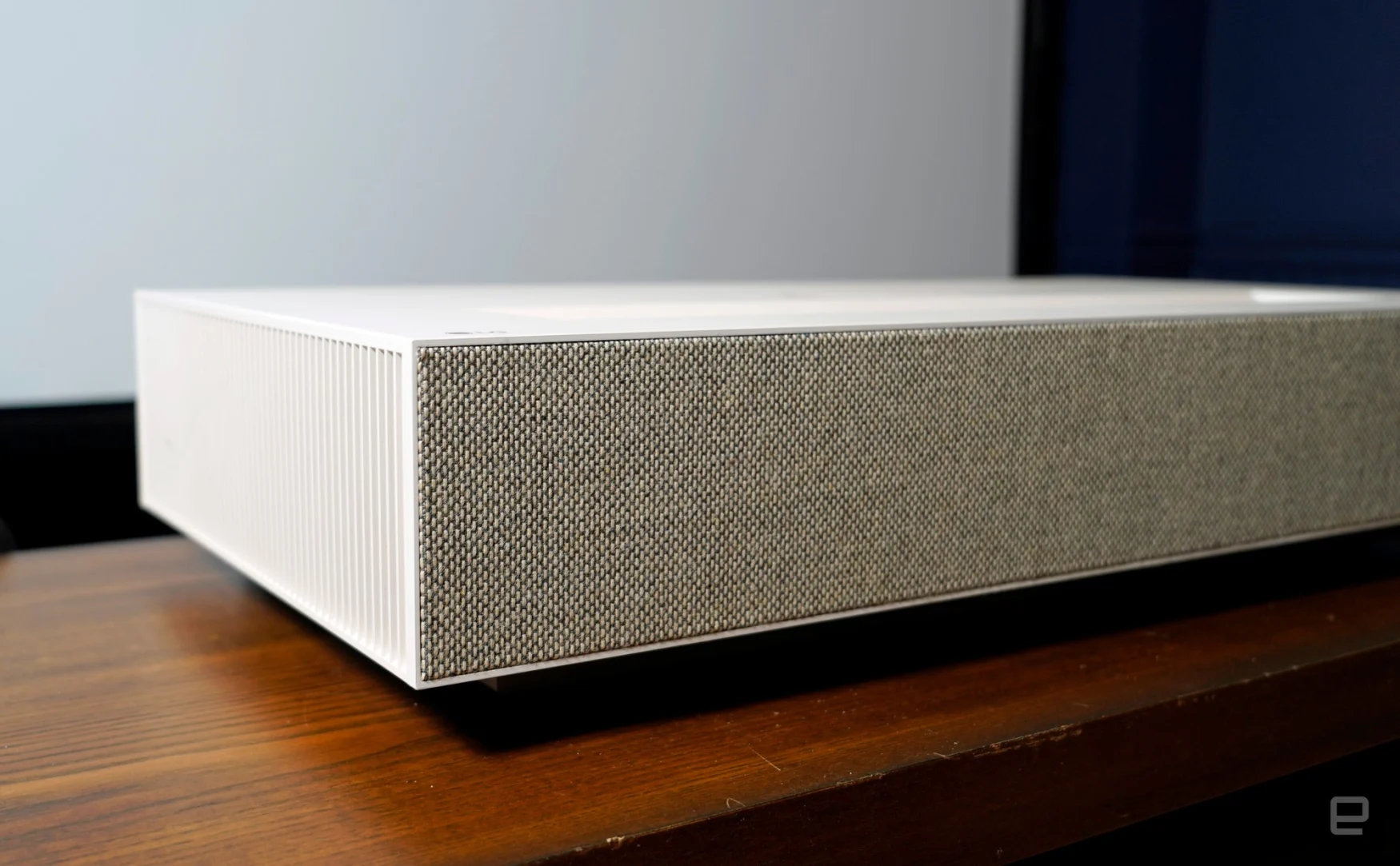LG's latest CineBeam ultra short-throw projector is a dream — if you can afford it
Who wouldn’t want a small box that can spit a 120-inch image onto your wall? That’s the basic pitch behind 4K ultra short-throw (UST) projectors, which are sometimes called “Laser TVs.” They’re technically easier to set up than traditional projectors, and unlike large TVs, they don’t require a huge footprint. Once you’ve placed it in front of a screen (or treated wall), you can summon an enormous cinematic image in an instant.
We’ve reviewed a few UST projectors over the years, most recently Formovie’s excellent $3,000 model. Personally, I’ve been in love with LG’s Cinebeam HU85L since we first saw it in action in 2019. Sure, it was expensive at over $6,000, but that was far less than the $10,000 earlier models cost (and certainly better than Sony’s early eye-watering $30,000 to $40,000 UST projectors). Much like LG’s first OLED TVs, the CineBeam represented everything I wanted from the future of home cinema.
Pros
- Excellent picture quality
- Bold colors
- Strong HDR performance
- Solid black levels
- Decent built-in speakers
- WebOS apps are useful
Cons
- Expensive
- No Dolby Vision support
- Input lag is high for gaming
Gallery: LG CineBeam HU915QE | 8 Photos
Gallery: LG CineBeam HU915QE | 8 Photos
Now after spending a few months with the company’s latest UST, the CineBeam HU915QE, I’m even more enamored. It’s brighter than its predecessor, reaching up to 3,700 lumens with a 2,00,000:1 contrast ratio, which makes it ideal for daytime viewing and HDR content. (Unfortunately, it doesn’t support Dolby Vision, a rare feature we were surprised to see on the Formovie UST.) The new CineBeam can also be pushed even closer to your wall with the ability to spit out a 90-inch 4K image from 2.2-inches away, or a 120-inch image from 7.2-inches. I just wish it was cheaper than $5,000 — with the Formovie unit coming in at thousands less, it’s hard to justify LG’s premium.
The HU915QE looks similar to most other UST projectors — it’s just a large rectangular box — and its design is practically the same as the previous CineBeam. Still, LG gave it enough flair to make it look at home in a classy living room. Its front speaker is covered in cloth, and the entire unit is encased in a solid light gray plastic. (There’s also a black model for better nighttime viewing, though that one inexplicably spits out a darker image.) Around back, there are three HDMI ports, 2 USB connections, an optical audio port and Ethernet. It’s not exactly heavy, at 26.9 pounds, but you definitely need a wide table or credenza to align it with your screen.

That setup process, by the way, is more annoying than you’d think. Configuring any projector is a pain, as you’ll need to place it in just the right spot to fill your screen. With a traditional long- or short-throw projector, you’re often able to shift the lens around manually. But configuring a UST like the CineBeam involves finding the exact height and distance from the screen to make everything look perfect. If it gets nudged by even a millimeter, the image will simply look wrong. That makes USTs less than ideal for homes with small children or overzealous pets. (Also, you don’t want kids peeking into the projector lens, as it’s bright enough to cause serious eye damage. That’s hard to do with a traditional projector, but far too easy when it’s just sitting on the floor)
When I tested the previous CineBeam HU85L, it took me a few hours to find the proper position to work alongside my dropdown projector screen. That involved buying a small table and stacking a few wide boxes to get everything aligned. Even then, I couldn’t quite get the image to fill every corner of my screen properly. That’s when I learned that dropdown screens aren’t ideal for UST projectors (Engadget’s Steve Dent also found that small creases in dropdown screens could lead to rippled images). Ultimately, I was able to get the older CineBeam to fill around 98 percent of my 120-inch screen, but I gave up on the dream of having the whole thing covered.
Thankfully, I was able to drop the HU915QE into the exact same spot as the earlier CineBeam. After tweaking the manual focus wheel a bit, it ended up covering the same area of my screen. If you’re building your home theater or living room around a UST projector, you’ll ideally want to use a tensioned ALR (ambient light rejection) screen. Those are built to block light from everywhere but your projector, which means they’ll deliver even better brightness and contrast. If you want to use a UST during the day like a TV, you’ll definitely want to push away as much ambient light as possible.










